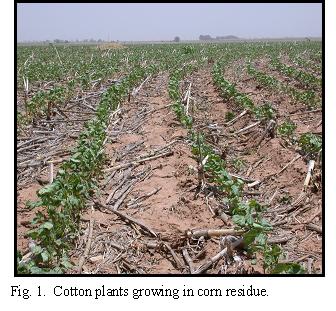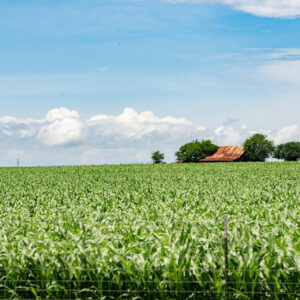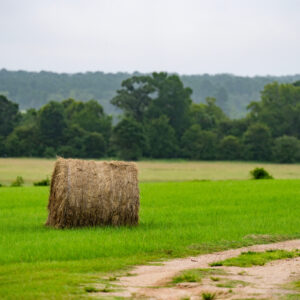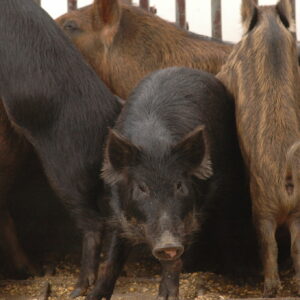(Fields 5A and 5B)
Wayne Keeling, John Everitt, Leanna Lyon, James Bordovsky, and Doug Nesmith
 Objective: The objective was to investigate the potential water savings and management problems of conservation versus conventional tillage of cotton.
Objective: The objective was to investigate the potential water savings and management problems of conservation versus conventional tillage of cotton.
Methodology: Paymaster 2326RR (PM 2326 RR) and Paymaster 2326 BG/RR (PM 2326 BG/RR) were planted into corn residue for the conservation tillage system and only PM 2326 RR was planted into ground previously planted in cotton for the conventional tillage system. Similar fertility and irrigation inputs were applied to both systems. A total of 15.4” of water was applied through LEPA socks. Standard land preparation and in-season cultivation were performed in the conventional system while only cotton planting and herbicide applications were done in the conservation tillage system. Herbicide treatments in the conservation tillage system included 2,4-D and Roundup Ultra Max (26 oz) pre-plant for winter weeds and volunteer corn, Prowl (3 pt/A) spray and water incorporated prior to planting, two broadcast postemergence topical Roundup Ultra Max applications (at planting and 4-leaf cotton) and Roundup Ultra Max post-directed on July 10.
Results: Good cotton stands were achieved when planting into the corn residue (Fig. 1) and effective pigweed, venice mallow and volunteer corn control were achieved. Similar yields were produced in the conventional tillage system and conservation tillage system (Table 1) indicating minimal water savings.
Table 1. Cotton yield as influenced by tillage systems and variety.
| System | Variety | Yield (lb/A) |
| Conventional Tillage | PM 2326 RR | 1590 |
| Conservation Tillage | PM 2326 RR | 1576 |
| Conservation Tillage | PM 2326 BG/RR | 1513 |





